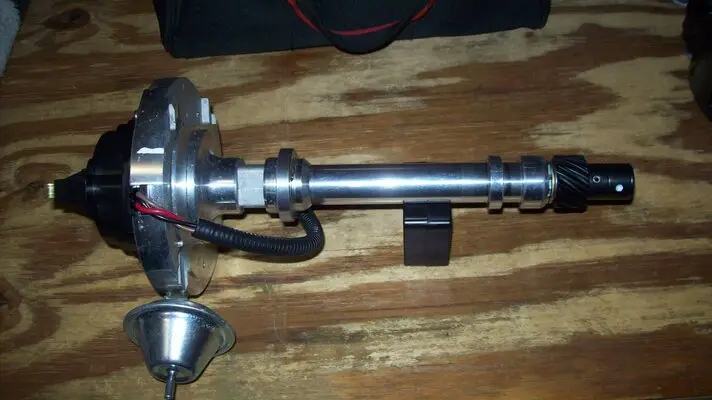I think that I would be taking a pencil flash and using it to take a good look look down into the distributor hole to see what the cam gear looks like. After that I would be pulling the oil filter and filleting it to see if there is any glitter in the pleats. And even if the filter is clean, change the oil, jic.
As has been noted, that drive gear is showing wear to a degree that could be more than normal. Is your cam a flat tappet unit or a roller and is it a cast piece or a billet? Why? The cast flat tappet cam is normally comfortable with the stock gear on the dizzie. With rollers usually being a billet, it will want either a mellonized gear or a bronze gear; they do not like the steel gears as they are steel themselves. The basic relationship is usually that one gear of the pair has to be softer than the other for them to get along; typically that is the distributor gear simply because it possesses the ability to be changed if/as needed. If in doubt, pay a visit to the website for whoever manufactured that cam and ask the tech page WTF?.. If the tech say all is well, then change the gear anyway, and maybe add a shim or two between the bear and the housing to tighten up the vertical movement of the shaft a little.
And just as a Q. here, is that distributor Made in the USA or is it a chinesium knockoff?? Think quality here.
Nick
As has been noted, that drive gear is showing wear to a degree that could be more than normal. Is your cam a flat tappet unit or a roller and is it a cast piece or a billet? Why? The cast flat tappet cam is normally comfortable with the stock gear on the dizzie. With rollers usually being a billet, it will want either a mellonized gear or a bronze gear; they do not like the steel gears as they are steel themselves. The basic relationship is usually that one gear of the pair has to be softer than the other for them to get along; typically that is the distributor gear simply because it possesses the ability to be changed if/as needed. If in doubt, pay a visit to the website for whoever manufactured that cam and ask the tech page WTF?.. If the tech say all is well, then change the gear anyway, and maybe add a shim or two between the bear and the housing to tighten up the vertical movement of the shaft a little.
And just as a Q. here, is that distributor Made in the USA or is it a chinesium knockoff?? Think quality here.
Nick








